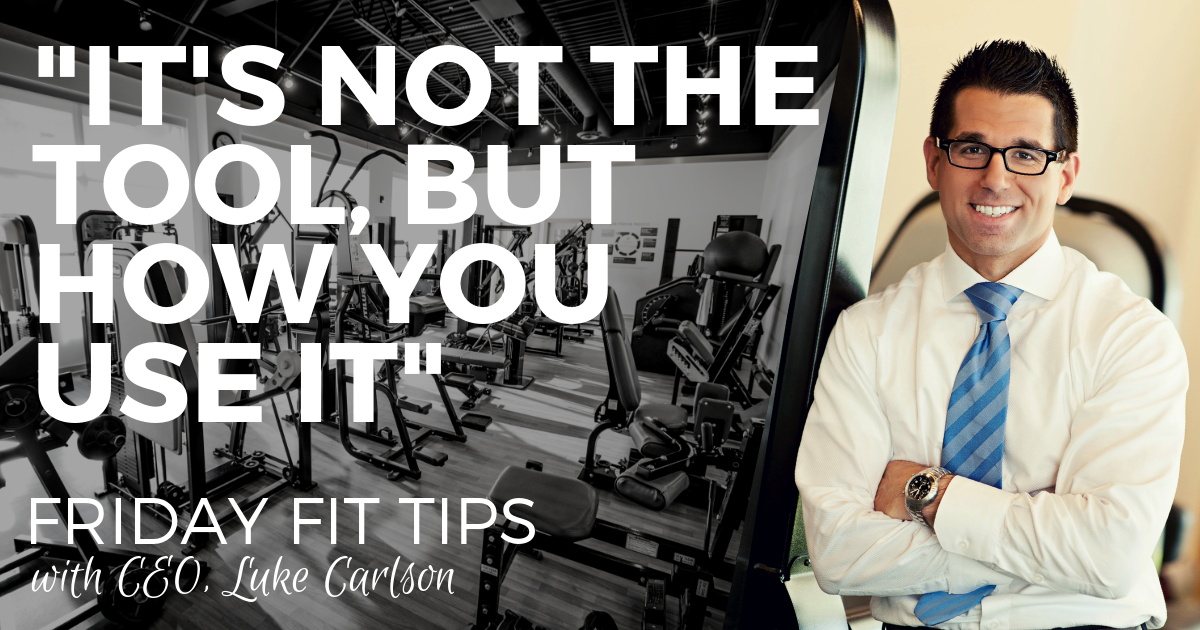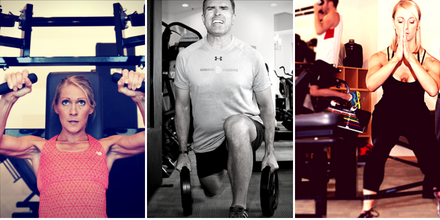THE HEALTH BENEFITS OF STRENGTH TRAINING: An Unintentional Branding Issue
"IT'S NOT THE TOOL, BUT HOW YOU USE IT"
Sometimes Old School is the Right School
The American College of Sports Medicine (ACSM) sent out an email survey to its members and certified professionals asking them what the new trends in the fitness industry are for 2013-2014. A few of our staff chuckled as we clicked through question after question about the latest and greatest fitness fads. It left me thinking, “Who cares if this stuff is “new” or hot… shouldn’t we be more concerned with whether or not it PRODUCES RESULTS?” The fitness industry (including everything ranging from health clubs, personal trainers, infomercial gadgets, and fitness/wellness magazines) is as guilty as any industry of hyping what’s new. I’m all for continual improvement and innovation, but new doesn’t mean better… it means, “new.” This line of thinking led to the development of our new “Group” workout card at Discover Strength. We named the workout card “Legends” because the three workouts come from three mentors of mine that are truly “legends” in the field of strength training and fitness. Each workout finds it’s origin in a different decade; one from the 70’s, one the 80’s, and one the 90’s.
First, Do No Harm
The Hippocratic Oath is credited to the ancient Greek physician and philosopher, Hippocrates. Taken by physicians and healthcare professionals, the most well known tenet is translated as “First, do no harm.” This is a fantastic starting point when considering an exercise program. I had the fortune of being taught this lesson by a mentor and leader in the field of exercise science and strength and conditioning, Mark Asanovich. Mark was the long time strength and conditioning coach for the Tampa Bay Buccaneers under head coach Tony Dungy and went on to spend a number of seasons as the strength and conditioning coach for the Jacksonville Jaguars (Mark had coaching stints with the Vikings, Bucs, Ravens, and Jaguars). Mark was presenting at a strength and conditioning conference in Ohio in 2002. His presentation was confrontational and not well received by the audience (if I recall, one attendee wanted to fist-fight with him following the presentation). Why? Because Mark questioned the popular practices and trends (Olympic weightlifting, fast speeds of movement, plyometric training) in strength training and called them out as… “Dangerous.” His message was simple. Our (the strength and fitness professional) role as an allied health professional is to “first, do no harm.” Our first priority in an exercise program should be safety. This really shouldn’t be a controversial topic. After all, by definition, exercise should improve physical function (not decrease it). Arthur Jones put it succinctly: “Exercise should help to avoid injury...not cause injury.” If it doesn’t improve our function and in fact has a negative impact on our health or function, it really isn’t exercise (it is probably better classified as sport or physical activity… very different than exercise). Mark was very clear, if an exercise carries with it a potential for acute or chronic injury, it shouldn’t be performed. This message resonated with me in 2002. Today, Mark’s message is more important (and less accepted) than ever. A review of current exercise practices, trends, classes, and methodologies reveals that the vast majority of what passes as exercise (particular resistance exercise) is in fact, about as dangerous as it gets.
The Major Limitation of a Free Weight: Unilateral Resistance
Arthur Jones, founder of Nautilus Sports Medical Industries and later the MedX Corporation succinctly stated, "Man is a rotary animal." When we contract our muscles, we are causing rotational movement around a joint or a series of joints. Herein lies the primary limitation of a free-weight; while our joints are causing rotary movement, gravity acts on a free-weight in only one direction. The end result is that in most free-weight exercises, the targeted muscle is exposed to direct resistance for only a small portion of the range of motion. An intelligently designed machine includes mechanical elements that make the resistance omnidirectional; thus our muscles must create limb movement that directly opposes the resistance throughout the entire range of motion. This is the foundational advantage of machines when compared to free-weights; an advantage that the vast majority of exercisers and fitness professionals are completely unaware of. Arthur Jones says it best: "Since the "direction of movement" of the involved body-parts is constantly changing, the "direction of resistance" must change in exact accord, automatically, simultaneously, instantly; again, this requirement can only be provided by a rotary form of resistance."





Leave a Reply
Your email address will not be published.